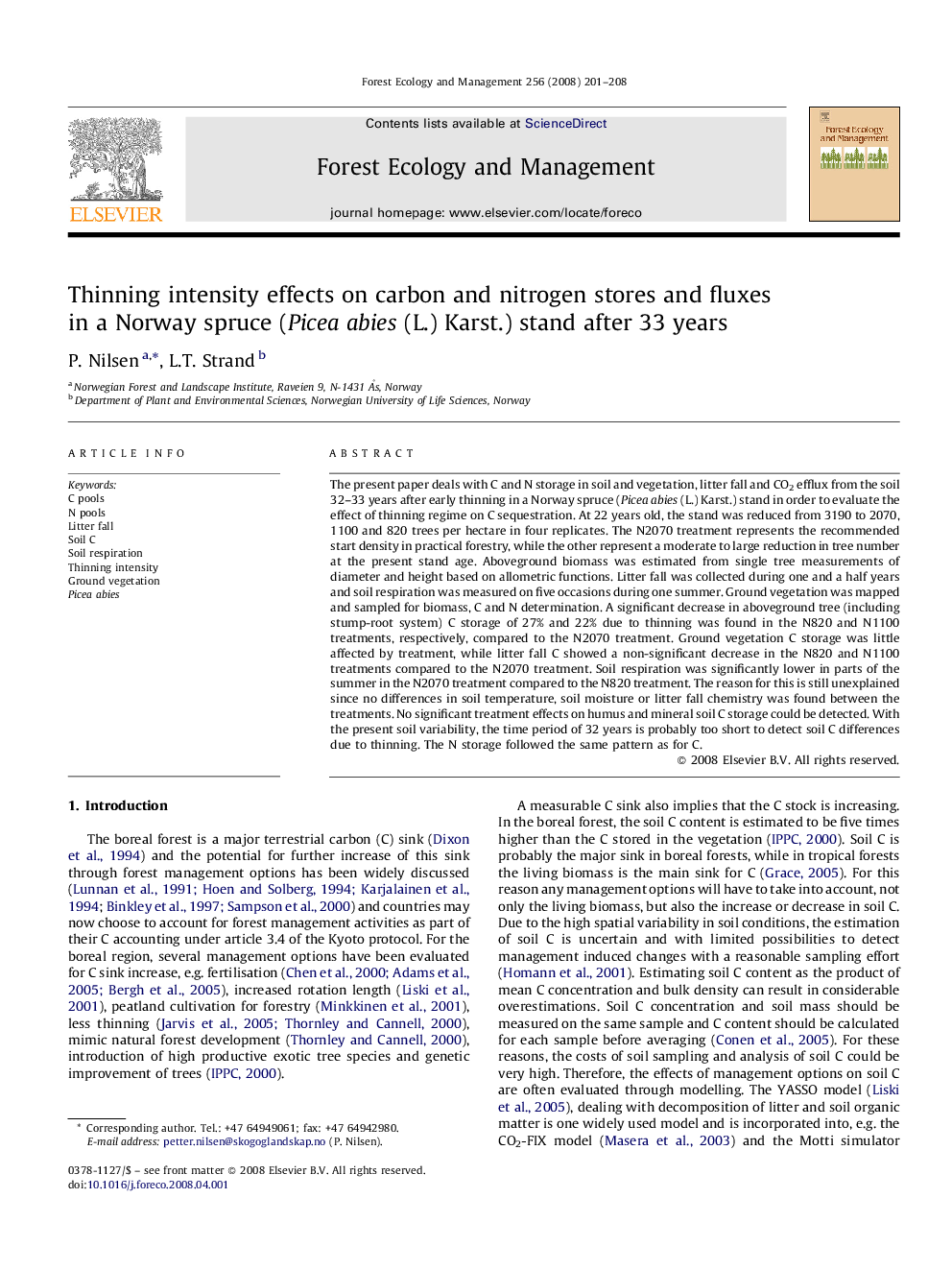| Article ID | Journal | Published Year | Pages | File Type |
|---|---|---|---|---|
| 88877 | Forest Ecology and Management | 2008 | 8 Pages |
The present paper deals with C and N storage in soil and vegetation, litter fall and CO2 efflux from the soil 32–33 years after early thinning in a Norway spruce (Picea abies (L.) Karst.) stand in order to evaluate the effect of thinning regime on C sequestration. At 22 years old, the stand was reduced from 3190 to 2070, 1100 and 820 trees per hectare in four replicates. The N2070 treatment represents the recommended start density in practical forestry, while the other represent a moderate to large reduction in tree number at the present stand age. Aboveground biomass was estimated from single tree measurements of diameter and height based on allometric functions. Litter fall was collected during one and a half years and soil respiration was measured on five occasions during one summer. Ground vegetation was mapped and sampled for biomass, C and N determination. A significant decrease in aboveground tree (including stump-root system) C storage of 27% and 22% due to thinning was found in the N820 and N1100 treatments, respectively, compared to the N2070 treatment. Ground vegetation C storage was little affected by treatment, while litter fall C showed a non-significant decrease in the N820 and N1100 treatments compared to the N2070 treatment. Soil respiration was significantly lower in parts of the summer in the N2070 treatment compared to the N820 treatment. The reason for this is still unexplained since no differences in soil temperature, soil moisture or litter fall chemistry was found between the treatments. No significant treatment effects on humus and mineral soil C storage could be detected. With the present soil variability, the time period of 32 years is probably too short to detect soil C differences due to thinning. The N storage followed the same pattern as for C.
